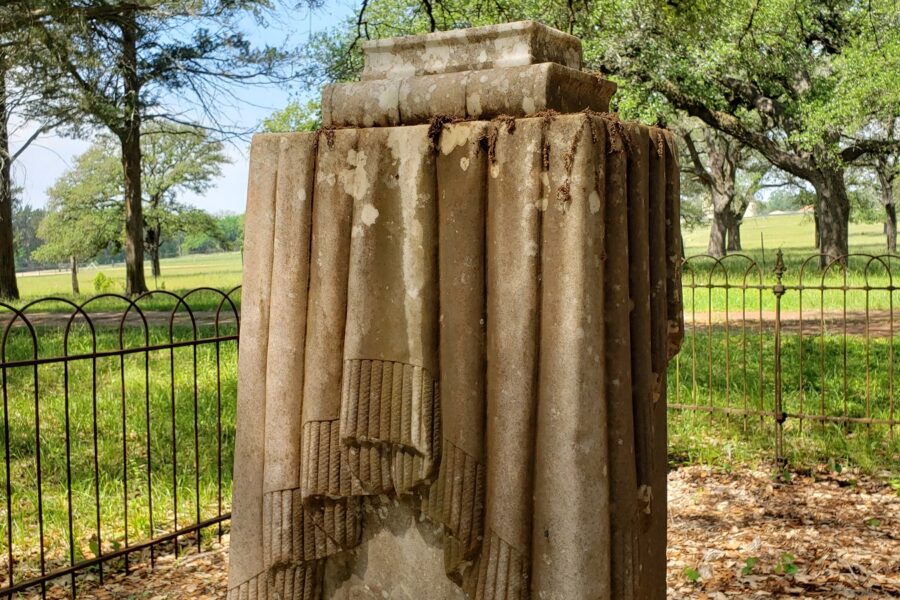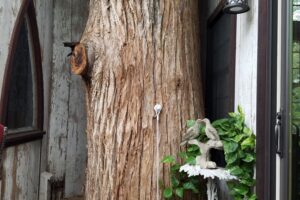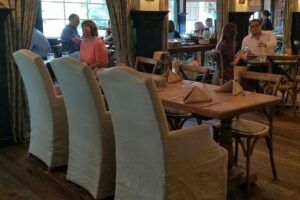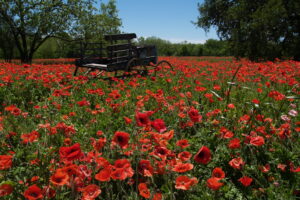On the Road to Independence
We stumble along toward the ghost town of Independence, Texas. I want to stop everywhere and drive down every road that looks or sounds interesting. Michael keeps his eyes on our appointed route—driving straight ahead. Luckily, the path we take is charming. At the western edge of East Texas—where members of Austin’s Old Three Hundred fell in love with this area—the road dips and curves, the hills undulate, rolling along. Pristine white fences line the way. Cattle dot the landscape. The occasional patch of wildflowers bloom. Just like Austin’s settlers of so long ago, I fall in love.
I have been here before, and that is why we are here again, knowing at the end of our destination lies Independence and the ruins of old Baylor College. There, I know I will find oak trees so ancient and knurled they will beg me to spread a blanket and have a picnic. But this drive was unplanned, spur of the moment, and we are still full from the humongous country breakfast we had at the Katy House this morning. I need to plan better.
Currently, I still don’t seem to be able to persuade Michael to veer from our chosen route, but I do ask him to stop and take a picture. This entails both making a U-turn and backing up. The sizeable rustic square arch over the gate leading to someone’s Shangri La has caught my eye. One of the posts has sprouted leaves, determined to remain a tree.

Old Baylor Park
Three photos taken, we continue driving east on the La Bahia Trail, aka FM 390, which will drop us in Independence, Texas, at the footstep of soaring columns that were once the entrance to Baylor College for Women. The Baylor men’s college campus was on the other side of town, on Windmill Hill. Eventually, because the railroad passed Independence by—the city fathers of the thriving village did not want it, that was a mistake—the women’s college moved to Belton, and the men’s college moved to Waco. The town of Independence—once the richest in Texas—began its decline.


Because it is a Monday, I am surprised—as we nose our car into a parking space—that we are not the only intrepid adventurers here today. Most people come and go within five minutes, but Michael and I tromp around, fascinated by this tiny corner of Texas history. I love the old ruins that tower above me, reaching for the sky. Then, Michael walks one way, and I walk another.


I point my toes toward masses of crumbling stone that have no storyboard. No explanation. However, I can tell by the circle of brick that is filled with dirt and the shattered walls surrounding it that at one time, this must have been a well-house. But whose? Did it belong to the college? And does it matter?


A Historic Cemetery in Independence
Before we leave, I point out to Michael a barely visible sign—difficult to read because it is time-worn. Faded. Rusted. I can just make out the words, historic cemetery, and that is good enough for us. The road and the sign both sing their siren’s song to me, and we head down the narrow path of shaded pavement toward the road less traveled.


After what seems like a long drive but is probably only minutes, we find the old cemetery. I can sense that Michael thinks a driving tour will be enough. My desire, however, is to explore on foot. Asking him to stop, I open the car door, kneel in the weeds to snap a picture of wildflowers and old stone. It takes me so long to determine the best angle that Michael finally gets out of the car and joins me.






I learn a new word—relict, as in ELIZABETH – RELICT of DR ASA HOXEY. The archaic meaning of relict is widow. I was thinking wife until Google told me differently. She lived for fifty-nine years. I hope they were good ones. There are last names here that I recognize: Bryan, Clay, Coles, Houston, Lewis. Sometimes my guess is right; at other times—let’s say I am way off. Moses Austin Bryan was the nephew of and secretary to Stephen F. Austin. Dr. Sam Houston, Junior was the Oldest son of General Sam Houston. He fought in the Civil War, became a prisoner of the Union after the Battle of Shiloh, subsequently studied medicine, but left that profession to write poetry and short stories.
Henry Lee Graves, the first president of Baylor University, is buried here, as is Judge John Prince Coles, a member of Austin’s Old Three Hundred. Tacitus Thomas Clay built Clay Castle, a four-story structure of native stone and cedar with a glassed-in ballroom on the third floor. His father was a cousin of Henry Clay, the Kentucky statesman.
We wander on. The peace of this place is palpable. The only sounds come from oak leaves crunching underfoot and birdsong floating on the gentle breeze. In the distance, someone burns piles of brush. The acrid aroma is the scent of a New England autumn—but it is a Texas spring.


Reflections
Reflecting on our day as we drive west toward home, I think of Shakespeare’s play when Macbeth spoke the words, “Life is but a walking shadow that struts and frets its hour upon the stage and then is heard no more.” And I wonder why those words had such an impact on me when I was so very young. I took them to heart and wanted to prove Shakespeare wrong. Somewhere along the way, I heard the Latin phrase, Carpe Diem! Words to live by. Life is a glorious adventure and opportunity to love and grow and be the best you can be—to walk and run and jump and sit and stand and strut and dance—to read and know and learn and create—to give, perhaps to dream.









Leave a Reply
Your email is safe with us.